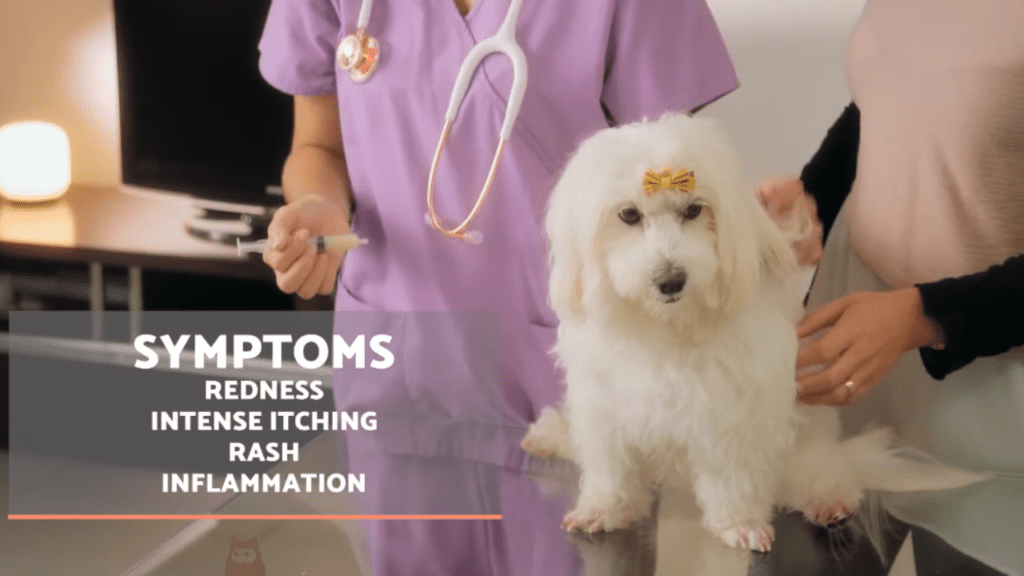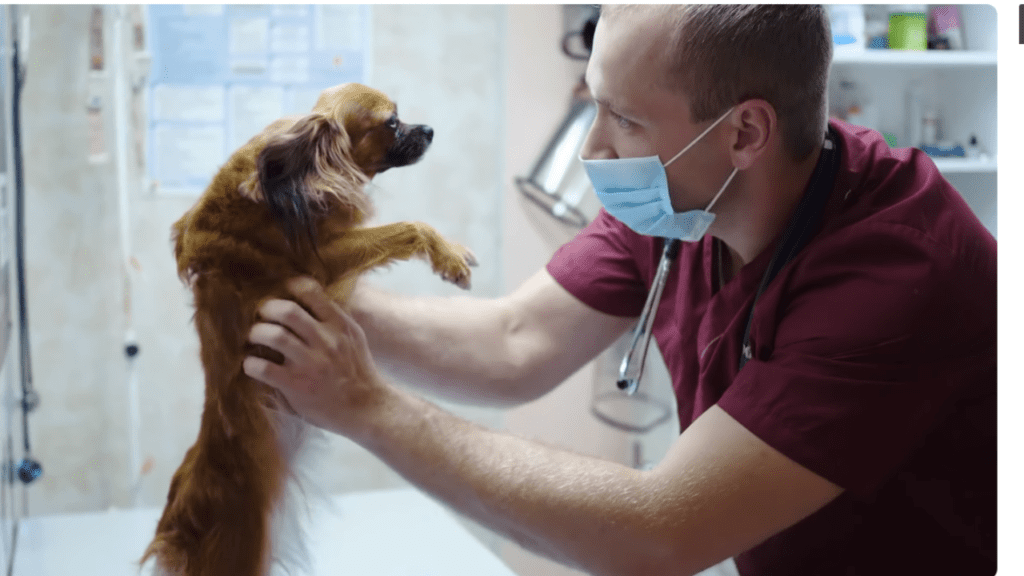Giving Your Dog a Flea Bath: A Comprehensive Guide
Introduction
When your furry companion starts scratching incessantly, it’s a clear sign that fleas have become unwelcome houseguests. Fleas not only make your dog uncomfortable but can also transmit diseases. The most immediate solution to this problem is giving your dog a flea bath. In this article, we’ll walk you through the entire process, from preparation to post-bath care, ensuring your pup is flea-free and comfortable once again.
Why a Flea Bath?
Before we dive into the nitty-gritty, let’s understand why a flea bath is essential.
1. Flea Eradication
A flea bath is a powerful method to eliminate fleas from your dog’s fur and skin.
2. Itch Relief
Relief from itching and irritation is one of the immediate benefits of a flea bath.
3. Preventing Disease
Fleas can transmit diseases such as tapeworms and Bartonella, making a flea bath crucial for your dog’s health.

Preparing for the Flea Bath
1. Gather Supplies
Before you start, make sure you have all the necessary supplies ready:
- Flea shampoo
- A bathtub or basin
- A towel
- A flea comb
- Treats for positive reinforcement
2. Brush Your Dog
Brush your dog’s fur thoroughly to remove any loose dirt and debris. This will make the flea bath more effective.
3. Secure Your Dog
Ensure your dog is comfortable and secure in the bathtub or basin, so they don’t slip or escape during the bath.
The Flea Bath Process
1. Wet Your Dog
Use lukewarm water to wet your dog’s fur completely. Make sure the water reaches the skin.
2. Apply Flea Shampoo
Apply the flea shampoo as per the instructions on the bottle. Avoid contact with eyes and ears.
3. Massage and Lather
Gently massage the shampoo into your dog’s fur, creating a rich lather. Focus on areas where fleas tend to hide, like behind the ears and around the tail.
4. Wait and Rinse
Allow the shampoo to sit for a few minutes, following the recommended wait time on the label. Then, rinse your dog thoroughly.
5. Flea Comb
While your dog is still wet, use a flea comb to remove any remaining fleas. Dip the comb in soapy water to drown the captured fleas.
6. Dry Your Dog
Wrap your dog in a towel and gently pat them dry. Make sure they are warm and comfortable.


Post-Bath Care
1. Prevent Reinfestation
Clean your dog’s bedding and the surrounding area to prevent re-infestation.
2. Ongoing Flea Prevention
Discuss a flea prevention plan with your veterinarian to keep fleas at bay.
3. Reward Your Dog
End the experience on a positive note by giving your dog treats and affection.
Preventing and Removing TICKS in DOGS .4 NATURAL REMEDIES
Numerous individuals seek alternative methods to attend to their pets, some of which demonstrate greater efficacy than others. In this video devoted to the well-being of our furry companions, we present several natural strategies for preventing and eradicating ticks in dogs. However, it is crucial to recognize that this does not serve as a substitute for professional veterinary care, which must be administered beforehand to assess the dog’s dermatological and overall health status.
What Exactly Are Ticks? Ticks, categorized as ectoparasitic arachnids, are parasitic organisms that exist externally on host organisms. Their peak activity typically falls within the seasons of spring and autumn. Of significant concern is their potential role as vectors for various diseases, including some of considerable severity. Consequently, it is imperative to undertake comprehensive deworming measures for our canine companions and to inspect their dermal condition following outdoor excursions, particularly during the heightened tick prevalence period. Timely removal within a 24-hour window becomes paramount, as this marks the approximate duration for ticks to anchor themselves onto the skin and initiate disease transmission.
Symptomatic Indicators Prior to proceeding, we urge you to subscribe to our channel for updates on the wealth of information we share. Detecting ticks in their larval stages can be challenging, necessitating vigilance for the ensuing symptoms: erythema, intense pruritus, eruptions, and localized edema. In severe cases characterized by generalized parasitosis, veterinarians may recommend the utilization of highly efficacious veterinary products. These practitioners possess the expertise to methodically extract ticks using specialized forceps and administer tailored solutions aimed at definitive parasite eradication. An array of products including drops, collars, tablets, serums, shampoos, and sprays find application in this context. Further insights on the potential transmission of parasites from dogs to humans can be gleaned from this related video.
Natural Remedies as Adjuncts It is crucial to underscore that natural remedies should be viewed as complementary rather than a replacement for professional veterinary intervention. Once you have consulted with a veterinary specialist, consider the following natural approaches:


Apple Cider Vinegar
Comprising acetic acid, the compound responsible for vinegar’s distinctive tang, apple cider vinegar exhibits potential in tick elimination, alongside other parasites such as fleas and lice. A solution entails blending equal proportions of water and apple cider vinegar, which is then applied via a clean cloth massaged gently onto the dog’s integument.


Citrus Efficacy
Citrus fruits, especially lemon but also encompassing oranges, grapefruits, and limes, possess reputed tick-repellent properties. A preparation involving two lemon halves simmered in two cups of water for an hour is recommended. Following cooling, the infusion can be transferred into a spray container and administered to the dog’s physique, ensuring prudent avoidance of facial and ocular contact.


Chamomile’s Role
Chamomile has been postulated as an efficacious tick deterrent. The application is straightforward: prepare a chamomile tea, permit it to cool, and delicately rub it onto the dog’s skin. Additionally, chamomile may contribute to curtailing the proliferation of tick eggs.


Harnessing Natural Oils
Certain essential oils exhibit the potential for tick eradication in dogs, notably neem oil when diluted with water. A mere two drops of neem essential oil blended with half a liter of water suffice for application. These strategies serve as invaluable tools to effectively manage tick infestations in dogs and deter their recurrence.
People may Ask on Google
Do you need to wash a dog before flea treatment?
It’s not always necessary to wash your dog before applying flea treatment. However, if your dog is excessively dirty or covered in mud, it’s a good idea to give them a bath and wait until they are completely dry before applying flea medication. This ensures that the medication is applied to clean and dry skin, which can make it more effective.
Should a dog be bathed after the application of flea medications?
In most cases, you should not bathe your dog immediately after applying flea medication. Flea medications are designed to be absorbed through the skin, and bathing your dog right after application can wash away the medication before it has a chance to work. It’s usually recommended to wait at least 48 hours after applying flea medication before giving your dog a bath.


Do I need to bathe my dog before applying Frontline?
Frontline, like other topical flea treatments, is typically applied to dry, clean skin. If your dog is dirty or has a lot of debris in their fur, it’s a good practice to bathe and thoroughly dry them before applying Frontline. However, always follow the specific instructions provided on the Frontline packaging or consult with your veterinarian for guidance.
Does giving a dog a bath get rid of fleas?
Giving your dog a bath can help temporarily reduce the number of fleas on their body, especially if you use a flea shampoo. However, it may not completely get rid of a flea infestation, as fleas can also be present in your home environment. To effectively eliminate fleas, it’s important to use flea treatment medications recommended by your veterinarian, regularly clean your pet’s bedding and surroundings, and follow a comprehensive flea prevention plan. Bathing alone may not provide long-term flea control.


Conclusion
Giving your dog a flea bath is a straightforward process that can provide immediate relief from itching and eliminate pesky fleas. Remember to gather all the necessary supplies, follow the steps carefully, and reward your furry friend for their patience. A flea-free dog is a happy dog, so take the necessary steps to ensure your pet’s comfort and well-being.
FAQs
1. How often should I give my dog a flea bath?
- It depends on the severity of the flea infestation, but generally, a monthly flea bath is sufficient.
2. Can I use human shampoo on my dog?
- No, human shampoo is not suitable for dogs. It can strip their skin of essential oils and lead to skin issues.
3. Are there natural alternatives to flea shampoo?
- Yes, you can explore natural options like neem oil or apple cider vinegar, but consult your vet first.
4. Can I use a flea collar instead of a flea bath?
- Flea collars are effective for prevention but may not eliminate an existing flea infestation.
5. What if my dog has a skin condition?
- If your dog has a skin condition, consult your veterinarian before giving them a flea bath to avoid exacerbating the issue.





